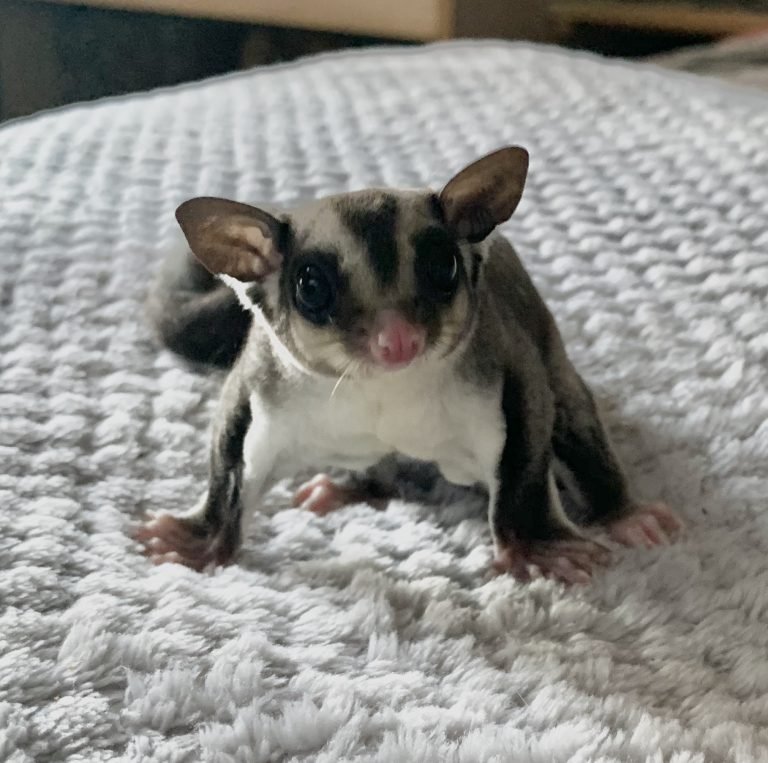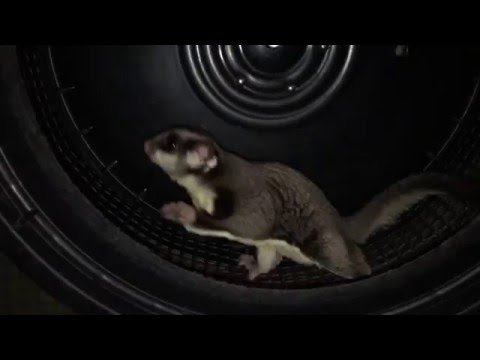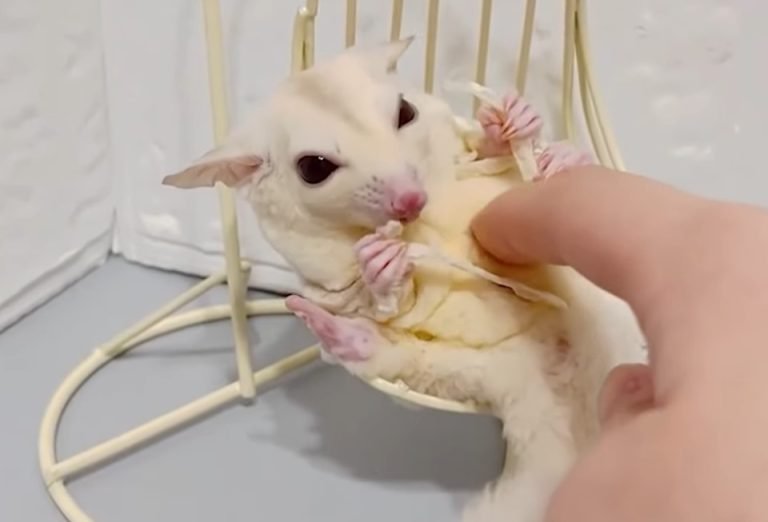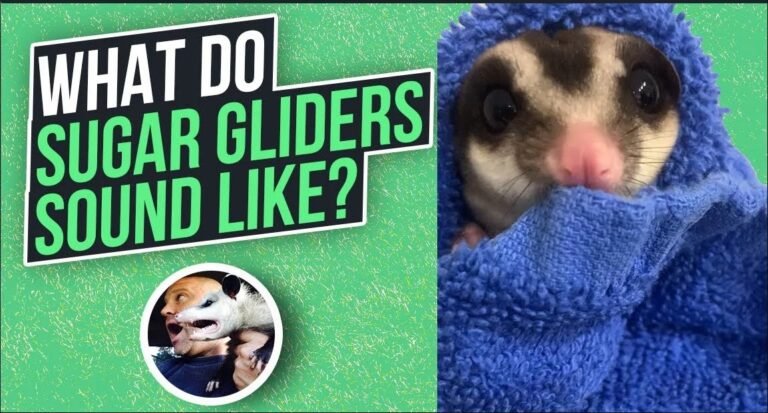Sugar Glider Body Language Fear VS Excitement Behavior Guide
Did you know that understanding your sugar glider’s body language can help you create a comfortable environment for them? These adorable animals may not speak our language, but they communicate through their movements and expressions. Being able to distinguish between fear and excitement in sugar gliders is crucial for their well-being. In this article we will describe about sugar glider body language fear vs excitement behavior guide.
By recognizing the subtle cues in their body language, such as various noises or changes in behavior when introduced to new surroundings, we can provide the right support. This behavior guide will equip you with the knowledge to interpret their signals accurately.
Sugar gliders rely on social interaction and rewards, so knowing how to approach them without causing stress is essential. It’s fascinating how a simple noise or the presence of food can evoke different reactions from these curious creatures. Understanding their body language will enable you to build trust and strengthen your bond.
So, let’s dive into the world of sugar glider body language together! Discover how interpreting their movements and expressions can help you navigate their first-time experiences, loud noises, and even interactions inside a tent. Get ready to decode the secret language of these captivating animals.
Understanding Sugar Glider Behavior: Fear and Excitement
Sugar gliders are fascinating creatures with unique behaviors that reflect their social nature. It’s important to understand how fear and excitement manifest in these adorable marsupials, as it can help us provide the best care for them.
1. Natural Instincts and Behaviors Sugar gliders have a range of natural behaviors that are essential to their survival. They are social creatures, living in colonies and relying on each other for protection and companionship. Understanding these instincts will give us insight into their behavior.
2. Fear vs Excitement Fear and excitement may seem similar, but they exhibit distinct characteristics in sugar gliders. When feeling fearful, sugar gliders may exhibit defensive behaviors such as hissing or biting. On the other hand, excitement is often accompanied by energetic movements like leaping or vocalizing joyfully.
3. Factors Influencing Emotional State Several factors can influence a sugar glider’s emotional state, affecting whether they display fear or excitement in different situations. These factors include:
- Socialization: Properly socialized sugar gliders tend to be more confident and less prone to fear.
- Environment: A safe and enriched environment can reduce fear while promoting positive behaviors.
- Previous Experiences: Negative experiences can contribute to fear responses, while positive experiences can foster excitement.
- Health: Illness or pain may make a sugar glider more fearful or less likely to display excitement.
Understanding the nuances of sugar glider behavior is crucial for their well-being. By recognizing signs of fear versus excitement, we can create a nurturing environment that supports their natural behaviors and helps them thrive.
Remember, every sugar glider is unique, so observing your pet’s individual behavior patterns will provide valuable insights into their emotions and needs.

Interpreting Sugar Glider Body Language for Fear and Excitement
Understanding your sugar glider’s emotions is crucial to providing the best care and creating a strong bond with your furry friend. By observing their body language, you can decipher whether they are feeling fear or excitement. Here are some key visual cues to look for:
- Body Posture: When experiencing fear, sugar gliders may crouch low with their bodies pressed against the ground or a surface. On the other hand, excitement is often displayed through an upright posture, with their bodies slightly arched and tails held high.
- Vocalizations: Pay attention to the sounds your sugar glider makes. Purring is a sign of contentment and love, indicating that they feel safe and secure. However, hissing and barking are clear indicators of fear or aggression. These vocalizations can be accompanied by chattering teeth or clicking noises.
- Facial Expressions: Sugar gliders have expressive faces that can reveal their emotions. Look for wide-eyed expressions when they are excited or curious about something in their environment. Conversely, narrowed eyes or a wrinkled forehead may indicate fear or discomfort.
To effectively interpret your sugar glider’s body language:
- Observe subtle changes: Keep a close eye on any slight shifts in their body posture, vocalizations, or facial expressions as these can provide valuable insights into their emotional state.
- Understand scent communication: Sugar gliders use scent marking as a way to communicate with others of their kind. They have scent glands on various parts of their bodies which release pheromones that convey messages such as territorial boundaries or mating readiness.
- Recognize social behaviors: Sugar gliders are highly social animals and exhibit different behaviors when seeking companionship or expressing affection towards each other. For example, grooming one another is a common bonding behavior among these marsupials.
Remember that interpreting sugar glider body language is not always straightforward, as their emotions can be complex. It’s essential to spend time observing and getting to know your sugar glider’s unique behaviors and cues. By doing so, you’ll strengthen your bond and ensure their well-being in both fearful and exciting situations.
Recognizing the Signs of Fear in Sugar Gliders
Fear is a natural emotion that sugar gliders, those adorable little creatures, can experience. Understanding their body language and behavior is crucial for pet owners to ensure their sugar gliders feel safe and secure. Here are some key signs to look out for when recognizing fear in these small marsupials:
Common physical signs that indicate fear in sugar gliders:
- Biting: Sugar gliders may resort to biting when they feel threatened or scared.
- Distress vocalizations: Listen for noises such as barking or singing that may indicate fear or discomfort.
- Freezing: When sugar gliders freeze in place, it can be a sign of fear as they try to avoid detection.
Behavioral changes that may suggest a fearful state in these small marsupials:
- Hiding: Sugar gliders might retreat to their nest or seek shelter when they feel afraid.
- Aggression: Fearful sugar gliders may display aggressive behaviors towards humans or other animals.
- Reduced activity level: If your normally active sugar glider becomes unusually still, it could be due to fear.
Understanding the reasons behind fear responses in sugar gliders:
Sugar gliders can experience fear due to various factors, including unfamiliar environments, loud noises, sudden movements, or interactions with larger animals. It’s important to create a calm and secure environment for them to minimize stress and anxiety.
Recognizing the signs of fear in your pet sugar glider is essential for providing the care they need. By observing their body language and understanding their behavior patterns, you can help alleviate any distress they may be experiencing. Remember, patience and gentle handling are key when building trust with these delightful little creatures.

Identifying Excitement in Sugar Gliders through Body Language
Sugar gliders are known for their energetic movements and behaviors when they’re excited. As a sugar glider owner, it’s important to understand their body language to differentiate between fear and excitement. By recognizing the signs of excitement, you can provide the right environment and interactions to keep your gliders happy.
Here are some key indicators of excitement in sugar gliders:
- Energetic Movements: When sugar gliders are excited, they often display increased activity levels. They may bounce around their enclosure, leap from branch to branch, or engage in acrobatic maneuvers.
- Vocalizations: Gliders have various vocalizations that signal enthusiasm or anticipation. They might chirp, bark, or make soft squeaking sounds when they’re excited. These vocal cues can be an excellent way to gauge their mood.
- Physical Indicators: Pay attention to the physical signs exhibited by your glider during moments of excitement. Tail wagging is a common behavior associated with heightened emotions. Jumping or leaping from one surface to another can indicate a high level of excitement.
To ensure a positive bond with your sugar glider and avoid confusing fear with excitement, consider the following tips:
- Positive Reinforcement: Use rewards and treats when your glider displays playful behavior or shows signs of excitement. This reinforces positive associations and strengthens your bond.
- Avoid Sudden Movements: Abrupt actions can startle sugar gliders and trigger fear responses rather than excitement. Move slowly and gently around them to maintain a calm environment.
- Bonding Pouch: Using a bonding pouch helps create feelings of security for your glider while also allowing them to experience new environments safely. This can increase playfulness and reduce anxiety.
Remember that every sugar glider is unique, so observe their individual body language patterns closely over time to better understand their specific signals of excitement. By being attentive to their needs and providing a stimulating and nurturing environment, you can foster a strong bond with your gliders.
Now that you know how to identify excitement in sugar gliders through body language, you’ll be better equipped to provide them with the care and attention they need for a happy and fulfilling life.

Common Misinterpretations: Distinguishing Fear and Excitement in Sugar Gliders
Misconceptions about sugar glider behavior can often lead to confusion when trying to distinguish between fear and excitement. Understanding the differences is crucial for providing proper care and addressing their needs effectively. Let’s explore some common misinterpreted body language cues and how to avoid confusion.
- Clarifying misconceptions: There are certain behaviors that are frequently mistaken for either fear or excitement in sugar gliders. By debunking these misconceptions, we can gain a clearer understanding of their true emotions.
- Examples of misinterpreted cues: One common misconception is mistaking a sugar glider’s trembling as a sign of fear when it could actually indicate excitement. Similarly, rapid movements and vocalizations may be interpreted as fear, but they could also signify enthusiasm or anticipation.
- Considering context: It’s important to consider the context in which these behaviors occur. For instance, if your sugar glider is displaying wide-eyed staring while being exposed to something new, it may be a sign of curiosity rather than fear. Observing the overall situation will help you make a more accurate interpretation.
To differentiate between fear and excitement in your sugar glider, keep the following points in mind:
- Body language: Pay attention to their posture, tail position, and ear movements. A hunched posture with ears flattened against the head usually indicates fear, while an erect posture with perked-up ears suggests excitement.
- Vocalizations: Listen closely to the sounds your sugar glider makes. High-pitched shrieks or hissing noises typically indicate fear, whereas soft chattering or barking sounds can indicate excitement.
- Physical reactions: Observe any physical changes such as puffing up their fur or hiding their face with their paws. These are signs of fear. On the other hand, if they engage in energetic bouncing or playful leaps, it’s likely they are experiencing excitement.
By understanding the differences between fear and excitement in sugar gliders, you can provide a safe and enriching environment that meets their specific needs. Remember to consider the context, observe their body language, listen to their vocalizations, and pay attention to physical reactions. This will help you accurately interpret their behavior and ensure their well-being.
Conclusion
Decoding sugar glider body language for fear versus excitement is crucial for understanding and communicating with these adorable creatures. By recognizing the signs of fear and identifying excitement through their body language, you can ensure their well-being and create a stronger bond with your sugar glider.
Understanding sugar glider behavior is the first step in deciphering their body language. Fear and excitement are two distinct emotions that manifest in different ways. By observing their postures, vocalizations, and facial expressions, you can gain insight into what they are experiencing.
Recognizing the signs of fear in sugar gliders is essential to providing a safe environment for them. Tail flicking, wide eyes, flattened ears, and hiding behaviors are common indicators of fear. Being aware of these cues allows you to address any potential sources of distress promptly.
On the other hand, identifying excitement in sugar gliders can help you engage with them in enjoyable activities. Bouncing movements, wagging tails, chirping sounds, and increased energy levels are typical signs of excitement. Understanding when your sugar glider is feeling thrilled enables you to provide stimulating experiences that enhance their quality of life.
It’s important to note that distinguishing between fear and excitement can sometimes be challenging due to overlapping behaviors. However, by closely observing multiple cues together rather than relying on a single indicator, you can make more accurate interpretations.
In conclusion, decoding sugar glider body language for fear vs excitement is an essential skill for any owner or enthusiast. By understanding their behavior patterns and recognizing specific signals associated with fear or excitement, you can ensure the well-being of your sugar glider while fostering a deeper connection with them.
FAQs
1. How long does it take to learn how to decode sugar glider body language?
Learning how to decode sugar glider body language takes time and practice. It varies from person to person but dedicating consistent effort towards observation and research will help improve your skills over time.
2. Can sugar gliders display both fear and excitement simultaneously?
While it is possible for sugar gliders to experience mixed emotions, fear and excitement are generally distinct from each other. However, certain behaviors may appear ambiguous, requiring careful observation to accurately interpret their emotions.
3. Are there any resources available for further learning about sugar glider body language?
Yes, there are numerous online resources such as articles, books, and forums dedicated to understanding sugar glider body language. These can provide valuable insights and tips to enhance your knowledge in this area.
4. What should I do if my sugar glider consistently displays signs of fear?
If your sugar glider consistently exhibits signs of fear, it’s important to evaluate their environment for potential stressors. Make sure they have a comfortable enclosure with appropriate hiding spots and minimize any loud noises or sudden changes that may be causing distress. Consulting with a veterinarian or experienced sugar glider owner can also provide helpful guidance.
5. How can I create an exciting environment for my sugar glider?
To create an exciting environment for your sugar glider, you can provide them with toys, climbing structures, and opportunities for interactive play. Experimenting with different types of enrichment activities can help keep them mentally stimulated and engaged.







